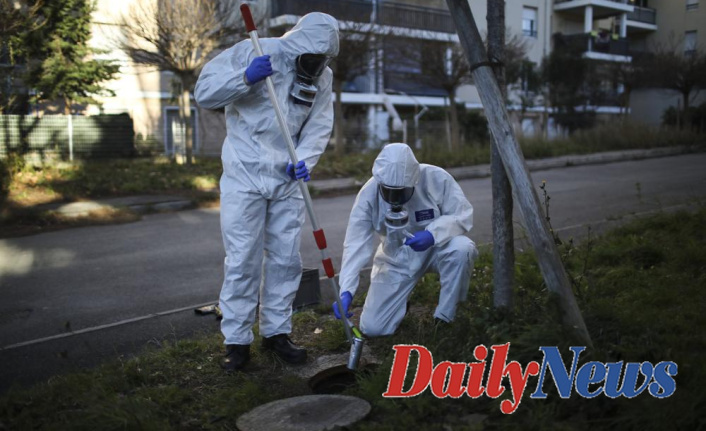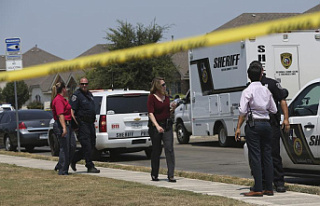They say that despite the improvements in disease monitoring over the past two years, some recent developments don’t bode well.
--As more people complete rapid COVID-19 home tests, fewer people get the gold-standard tests the government uses to determine case counts.
The Centers for Disease Control and Prevention (CDC) will soon reduce the number of labs that are used to search for new variants.
Health officials are increasingly focusing their attention on hospitalizations, which only rise after a surge.
A wastewater surveillance program is still a patchwork and cannot be relied upon for the necessary data to understand future surges.
White House officials claim that the government is running low on funds to fund vaccines, treatment and testing.
Experts are concerned about the next COVID surge in the United States
Experts are monitoring for a possible new COVID-19 spike in the U.S. as coronavirus cases rise in certain parts of the globe. They also wonder how long it will take.
They say that despite the improvements in disease monitoring over the past two years, some recent developments don’t bode well.
--As more people complete rapid COVID-19 home tests, fewer people get the gold-standard tests the government uses to determine case counts.
The Centers for Disease Control and Prevention (CDC) will soon reduce the number of labs that are used to search for new variants.
Health officials are increasingly focusing their attention on hospitalizations, which only rise after a surge.
A wastewater surveillance program is still a patchwork and cannot be relied upon for the necessary data to understand future surges.
White House officials claim that the government is running low on funds to fund vaccines, treatment and testing.
CORONAVIRUS PANDEMIC
Amazon attempts to thwart union drive on two fronts
University of Maine System relaxes the mask mandate
The Idaho House and Senate will vote to adjourn until Thursday
Ducey extends medical licensures, key to end of virus emergencies
Jennifer Nuzzo, a Brown University researcher on pandemics, stated that "We are not in a good situation."
Scientists agree that there are more vaccines available than ever before the pandemic started. Monitoring has improved a lot.
Scientists have announced a 6-month-old program to test international travelers who fly into four U.S. airports. A genetic test of a sample taken Dec. 14 revealed a coronavirus variation -- the descendant known as BA.2 -- seven day earlier than any other detection reported in the U.S.
There are more good news: U.S. deaths, hospitalizations, and cases have fallen for several weeks.
It's not the same everywhere. This week, the World Health Organization reported that there was an increase in coronavirus cases in two consecutive weeks worldwide. This is likely due to COVID-19 preventive measures being stopped in many countries and because BA.2 spreads faster.
Public health experts aren’t sure what this means for the U.S.
According to the CDC, BA.2 is responsible for a growing number of U.S.-related cases -- more than one third nationally and over half in the Northeast. In New York, small increases in overall cases have been observed.
Katriona Shea, Penn State University, stated that some northern states have the highest rates for BA.2. However, they also have the lowest case rates.
Houston Methodist infectious disease specialist Dr. James Musser called the national case data for BA.2 "murky."
Here are the COVID-19 trackers' findings and concerns.
TEST RESULTS
Although a lot of test results have been essential in understanding the spread of coronavirus, they have always been flawed.
Initial tests were limited to those who were sick. This meant that cases did not include people with no symptoms or who could not be swabbed.
The availability of home test kits increased dramatically after the omicron wave. Many people who do home tests don’t report their results to anyone. They are also not collected by health agencies.
Mara Aspinall, managing director of an Arizona-based consultancy company that tracks COVID-19 test trends, is Mara Aspinall. She estimates that between January and February, 8 million to 9,000,000 rapid home tests were performed each day on average -- about four to six times as many PCR tests.
Nuzzo stated that "the case numbers aren't as much a reflection on reality as they once was."
HUNTING VARIANTS
The U.S. was far ahead of other nations in the use of genetic tests to search for virus mutations.
The agency had signed agreements with 10 large laboratories to perform the genomic sequencing one year ago. Over the next two weeks, the CDC will reduce that program to just three labs.
The weekly volume of sequences through the contracts was higher during the December and January omicron waves, when more people were being tested. It has already fallen to 35,000. It will drop to 10,000 by the end of spring, but CDC officials claim that the contracts allow for more than 20,000 if needed.
According to the agency, turnaround times and quality standards have been improved and it doesn't expect that the changes will affect its ability find new variants.
Experts from outside expressed concern.
Bronwyn MacInnis from Harvard's Broad Institute of MIT, director of pathogen genomic surveillance, said that it was a significant reduction in our baseline surveillance.
SEWAGE SURVEILLANCE
A constantly evolving monitoring system monitors sewage for signs of coronavirus, which could be used to detect brewing infections.
Researchers found that wastewater samples were linked to positive COVID-19 test results a week later. This suggests that health officials may be able to get an early look at trends in infection.
Some health departments have also used sewage to search for variants. New York City detected the omicron variant in a sample it took on Nov. 21, just 10 days before the first reported case in the U.S.
Experts point out that the system does not cover all of the country. It doesn't differentiate between infected and uninfected.
It's a very important and promising strategy, there is no doubt. However, it is not yet possible to determine its ultimate value," stated Dr. Jeff Duchin (the health officer for Seattle/King County in Washington).
HOSPITAL DATA
The CDC released a new set last month of measures to decide whether or not to lift the mask-wearing restrictions. They focus less on positive results from tests and more on hospitals.
Hospital admissions are a poor indicator because it can take up to a week before an infection is detected and treated. However, a lot of researchers think the change is justified. According to them, hospital data is more reliable than case counts and can be more easily interpreted.
Also, the lag isn't as long as you might think. According to some studies, many people delay getting tested. The results of those who do get tested are not always immediately apparent.
Spencer Fox, University of Texas data scientist, is part of a team that uses cellphone and hospital data to forecast COVID-19 in Austin. He said, "Hospital admissions were the better sign" than test results for a surge.
However, there are some concerns about the future of hospital data.
A group of former directors at the CDC recently wrote that if the federal government withdraws its public emergency declaration regarding public health, officials will no longer be able to compel hospitals reporting COVID-19 data. They asked Congress to pass a law that would provide permanent authorities so they wouldn't be blinded by emerging health threats.












